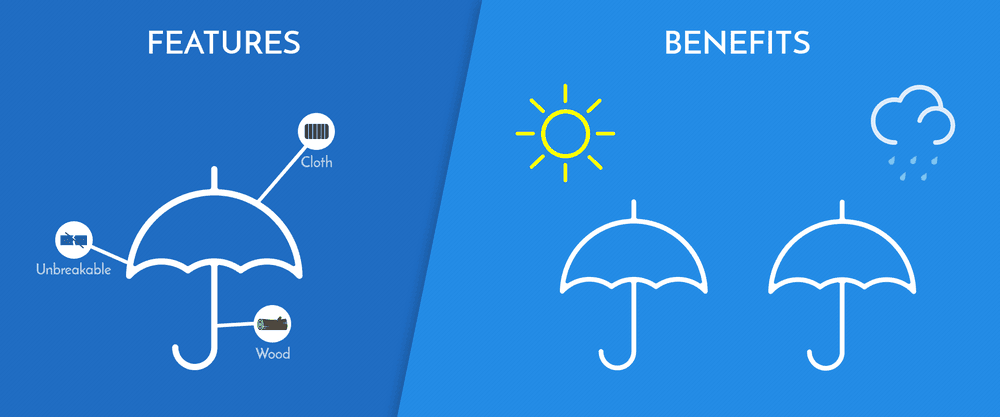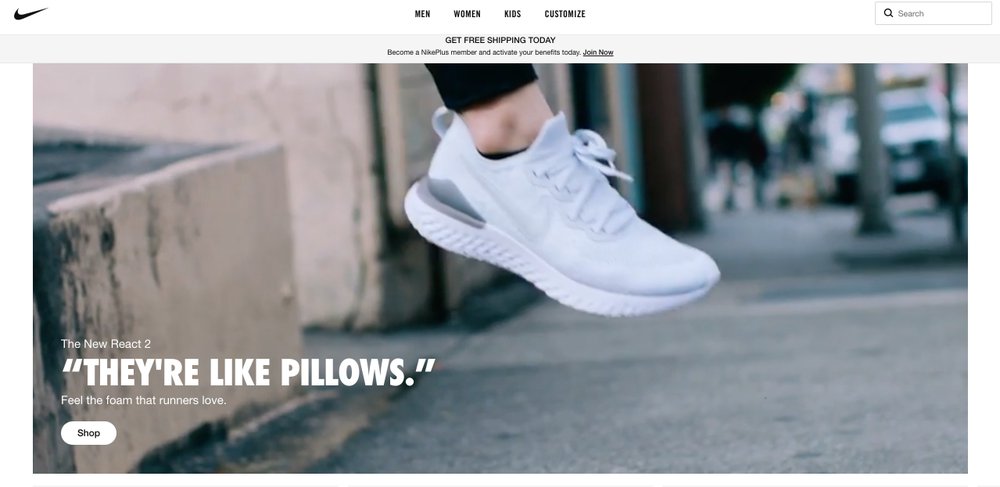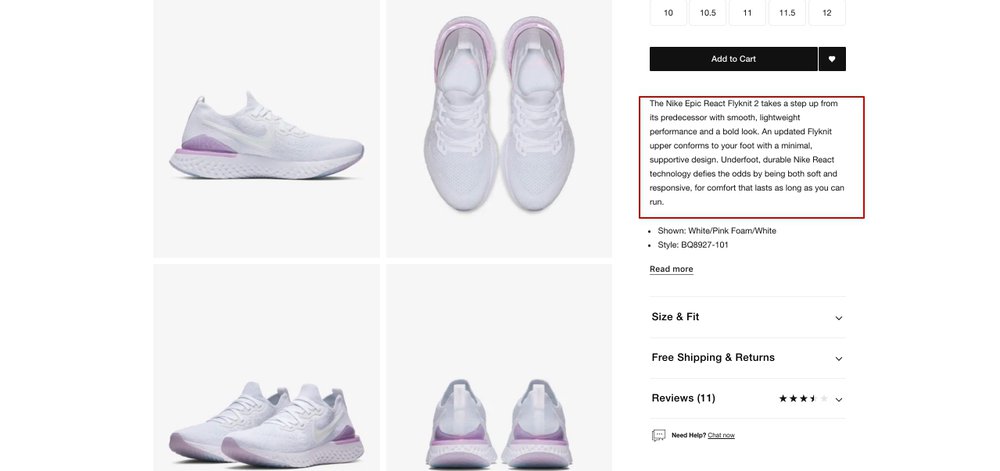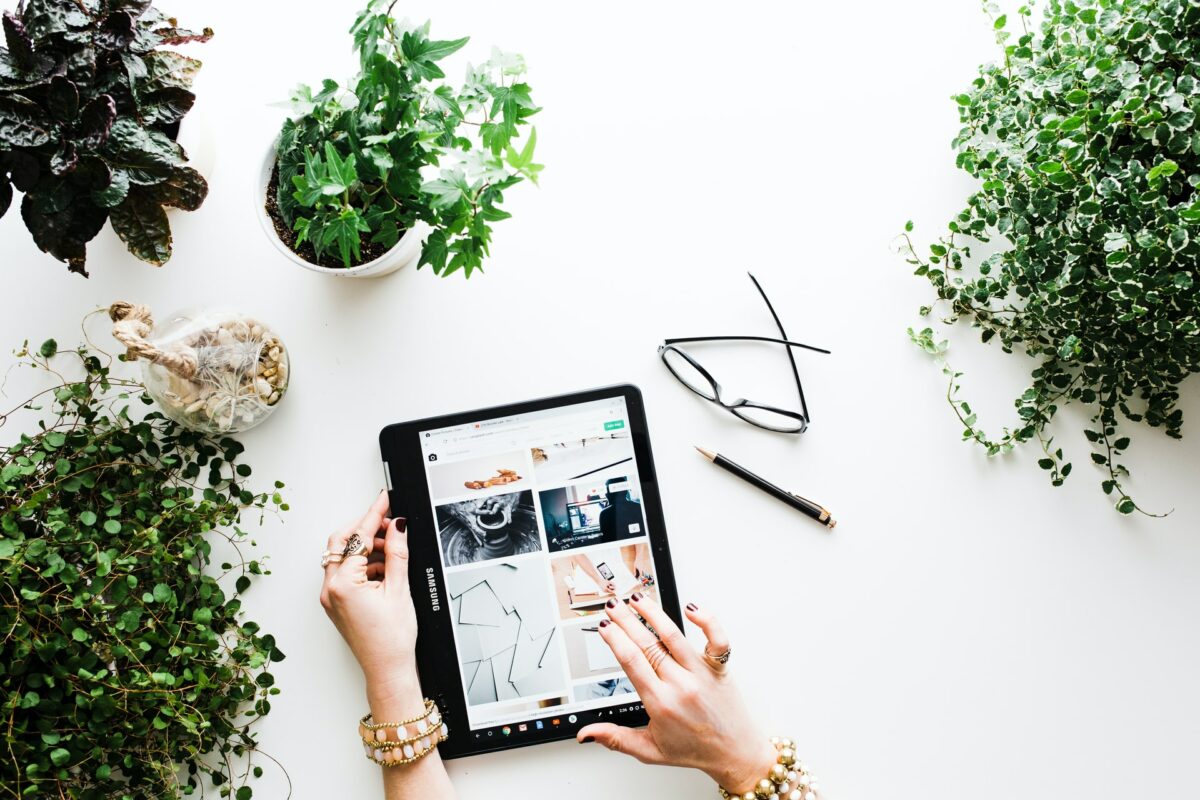‘In a factory, we make cosmetics; in a store; we sell hope.’
That’s how the founder of Revlon Charles Levson described his company’s strategy. We, at Convertful, could not agree more! The idea behind his statement was that you shouldn’t tell the customer what you’ve produced, but instead the value they will gain from your product.
And, although this is a simple idea, many marketers fail to apply it.
Many businesses describe their product in the way that they see it, not in the way to attract a customer. This has dire consequences, – according to the e-Commerce study of NN Group, 20% of eCommerce companies fail because of an unclear product description. This comes from a fundamental misunderstanding of the differences between features and benefits.

Product features are the characteristics of your product. These are the plain facts about the product – its size, weight, and functionality.
These are elements that are more important in the production stage. But when it comes to the selling stage, there is only one thing that will make the difference for your customer – what’s in it for me?
The benefits answer this question. A product benefit is the value that a customer realizes from the product. It is an expression of fulfilling the customer’s need.
Customers are more interested in the benefits of the products they are buying versus their technical details.
In short – product features show what your product does, and product benefits show what it does for them.
Let’s take a look at some examples of the differences between product features and benefits.
Look at this commercial of iPhone 7. It was one of the first dual camera phones with software that blurred the background of photos, like in professional SLR cameras.
But the main iPhone customers aren’t professional photographers. They are people that want to take cool photos. This is what’s shown in an iPhone commercial:
As you can see, this couple uses the camera to share experiences and make lasting memories. The camera has excellent quality but what the commercial is emphasizing is the benefit of capturing moments.
Another example is a page from new running shoes by Nike. The focus is on the benefits – they even use a testimonial on the main screen to emphasize what’s important for the audience: these new shoes are super comfy.

Once we dig deeper, we see a more specific description – the technology and how it works. But they don’t put it in the first place and don’t use it as the main selling point to attract customers.

How To Differentiate Product Features From Benefits
Let’s play a game. Take a look at these product descriptions and try to differentiate between the product benefits and features.
- Our fare aggregator ‘FlyWithUs’ collects information from 2000 different airlines and is shown in the convenient search system. You can use more than 20 filters on our website.
- Establish a healthy routine and get that “Summer Body” you’ve always wanted!
- This dress is made from natural high-quality fiber.
- Take this laptop with you while traveling, complete the tasks on the move and never feel tired from the extra weight in your bag.
Now let’s review the answers.
- Our fare aggregator ‘FlyWithUs’ collects information from 2000 different airlines and shows it in the convenient search system. You can use more than 20 filters on our website.
Feature.
Customers are not interested in how many airlines this aggregator provides. They are simply looking for the best flights.
Let’s change this description:
‘Fare aggregator ‘FlyWithUs’ helps you to find the cheapest tickets on the Internet with the most convenient connections.’
Better, right?
- Establish a healthy routine and get that “Summer Body” you’ve always wanted!
Benefit.
The primary goal of the gym’s visitors is to lose weight. The gym describes the value for the visitor. It has grabbed the attention of the visitor by demonstrating what’s in it for them – getting ‘Summer Body’ of their dreams.
- This dress is made from natural high-quality fiber.
Feature.
Focus on what’s important for the customer, not the manufacturer. Let’s try like this: ‘The dress is comfy and stylish and will make you feel happier and more confident.’
- Take this laptop with you while traveling, complete the tasks on the move and never feel tired from the extra weight in your bag.
Benefit.
The focus is on not to struggle with a heavy travel bag when traveling. The result is focused on making a memorable experience – not to be bogged down by heavy baggage.
Now that you know how to tell the difference between product features and benefits let’s review how to prepare the benefits list for the product.
How To Describe Product Features As Benefits
This simple procedure will help you to outline the benefits of your features.
Define Your Customer
Answer these questions: who are they? What is the value your product delivers? Do they already use your competitor’s product, and if so, what will make them switch to your brand?
Make The List Of Features
List all the things that you are proud of the most about your product, and why it’s unique. At this stage, the focus is on the features, not the benefits.
For example, let’s say you are an owner of a Facebook marketing agency. What would be your features? Your team of professionals and that you specialize only on Facebook Ads for eCommerce.
Turn Them Into Benefits
After each feature, ask a simple question – ‘So What?’
Let’s do a little magic and turn the features from the previous examples into benefits:
We are highly skilled professional digital marketers, so we will make your business grow to 7-figures rapidly.
Our sole focus is on Facebook Ads for eCommerce, so we have a great domain expertise and will help you to implement all the best practices.
Check What Will Be Best For Your Customers
Leave only the benefits that will be valuable to your customer.
Let’s say, your drill has a great design, and it looks fabulous. Sounds like a benefit, but it isn’t if your customer is a laborer who needs to make a hole in the wall.
Voilà, the list of your benefits is ready!
In your marketing material, you should not forget to mention features, but also benefits. Both of them are important. Also, if you want to create pop ups, scroll boxes, welcome screens and other kinds of lead generation widgets, try out Convertful.
Conclusion
Benefits are the outcome and result that the customer will experience by using your product – the reason why a visitor converts into a customer.
Remember, consumers don’t buy things for the sake of buying them – they want to solve their problem.
Get out of the product bubble. Go outside, talk with your customers, find what value you can bring to them and point it out on your landing page.
Now that you know the difference between the features and benefits of your product take a look at key elements of effective landing pages and how they influence conversion rates.
![10 Types of Digital Marketing [with Examples]](https://convertful.com/wp-content/uploads/2019/03/types-digital-marketing_136db1be596b5712e0570f045c1585b0_2000.jpg) 10 Types of Digital Marketing [with Examples]
10 Types of Digital Marketing [with Examples] 13 Tactics To Improve Your Conversion Rate
13 Tactics To Improve Your Conversion Rate
2 Comments. Leave new
It’s cool?!!
Nice Article..Most Thanks